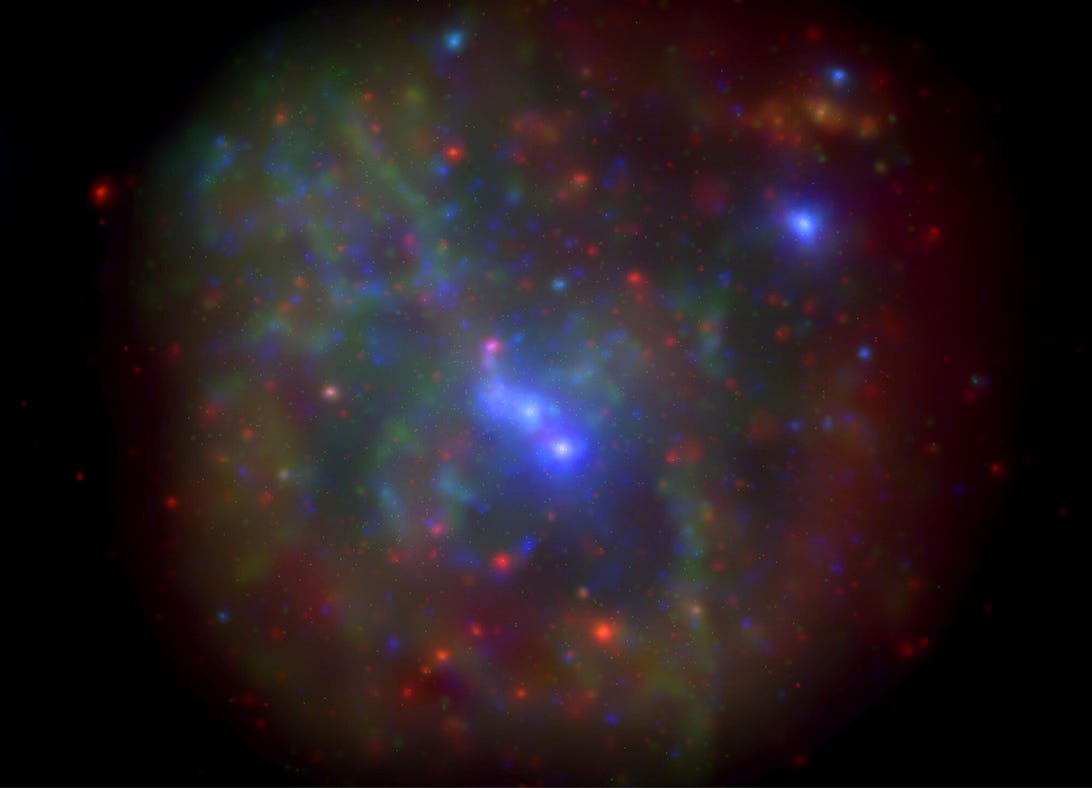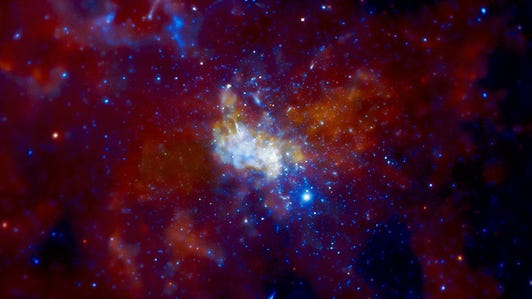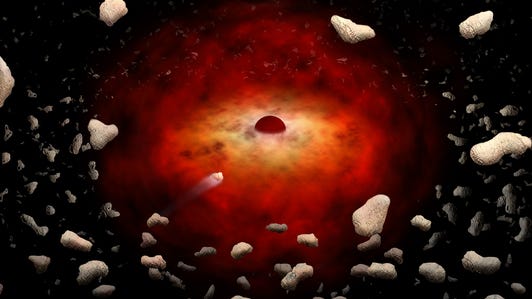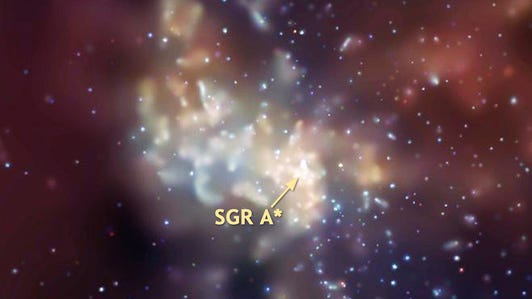Sagittarius A is flashing the rest of the galaxy in a way that scientists have yet to fully understand.
Eric Mack
Jan. 12, 2022

Sag A is at the center of this X-ray image of the Milky Way's galactic nucleus.
NASA/Swift/N. Degenaar
A mysterious monster lies at the center of our galaxy and after intensive study by researchers the supermassive black hole Sagittarius A (Sag A) appears just as unpredictable and chaotic.
An international team analyzed fifteen years worth of data and concluded that Sag A flares irregularly from day to day as well as over the longer term.
"How the flares occur exactly remains unclear," Jakob van den Eijnden, a researcher at the University of Oxford, said in a statement. "It was previously thought that more flares follow after gaseous clouds or stars pass by the black hole, but there is no evidence for that yet. And we cannot yet confirm the hypothesis that the magnetic properties of the surrounding gas play a role either."
Jakob van den Eijnden is co-author of a paper soon to be published in the journal Monthly Notices of the Royal Astronomical Society.
For decades we've known that Sag A is an active, dark maw and a strong source of radio, X-ray and gamma ray emissions. As it roils and presumably consumes everything that comes near it lets off daily flashes of radiation that can be 10 to even 100 times brighter than normal background emissions coming from the black hole.
Supermassive black hole at Milky Way's core gives up a secret
A mysterious monster lies at the center of our galaxy and after intensive study by researchers the supermassive black hole Sagittarius A (Sag A) appears just as unpredictable and chaotic.
An international team analyzed fifteen years worth of data and concluded that Sag A flares irregularly from day to day as well as over the longer term.
"How the flares occur exactly remains unclear," Jakob van den Eijnden, a researcher at the University of Oxford, said in a statement. "It was previously thought that more flares follow after gaseous clouds or stars pass by the black hole, but there is no evidence for that yet. And we cannot yet confirm the hypothesis that the magnetic properties of the surrounding gas play a role either."
Jakob van den Eijnden is co-author of a paper soon to be published in the journal Monthly Notices of the Royal Astronomical Society.
For decades we've known that Sag A is an active, dark maw and a strong source of radio, X-ray and gamma ray emissions. As it roils and presumably consumes everything that comes near it lets off daily flashes of radiation that can be 10 to even 100 times brighter than normal background emissions coming from the black hole.
Supermassive black hole at Milky Way's core gives up a secret
(images) See all photos
+7 More
The team used observations from NASA's Swift observatory in orbit and were unable to distinguish a pattern in Sag A's flaring activity from day-to-day or over the span of years. For example, the black hole was hyperactive from 2006 to 2008, then relatively quiet until 2012 before seeing an increase in activity again.
"The physical process producing the flares is not fully understood and it is unclear if the flaring rate varies, although some recent works suggest it has reached unprecedented variability in recent years," the paper reads.
Members of the research team say they will request more data and observing time on Swift to continue studying the little understood celestial object, which also happens to be the most powerful force within at least 100,000 light years. Seems worth taking a second look.
The team used observations from NASA's Swift observatory in orbit and were unable to distinguish a pattern in Sag A's flaring activity from day-to-day or over the span of years. For example, the black hole was hyperactive from 2006 to 2008, then relatively quiet until 2012 before seeing an increase in activity again.
"The physical process producing the flares is not fully understood and it is unclear if the flaring rate varies, although some recent works suggest it has reached unprecedented variability in recent years," the paper reads.
Members of the research team say they will request more data and observing time on Swift to continue studying the little understood celestial object, which also happens to be the most powerful force within at least 100,000 light years. Seems worth taking a second look.



No comments:
Post a Comment